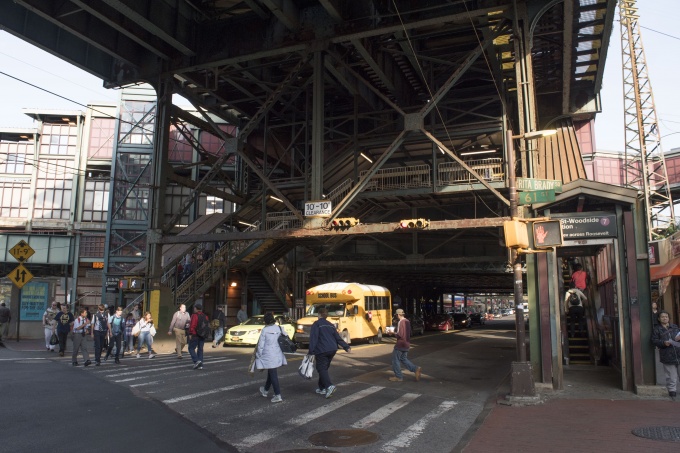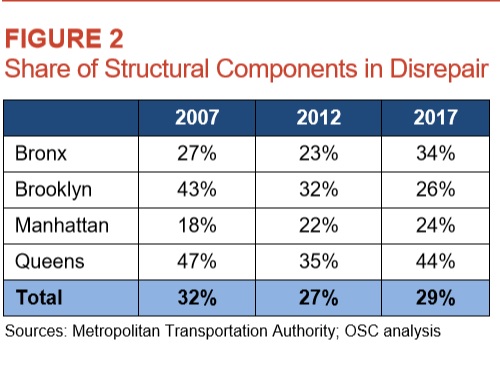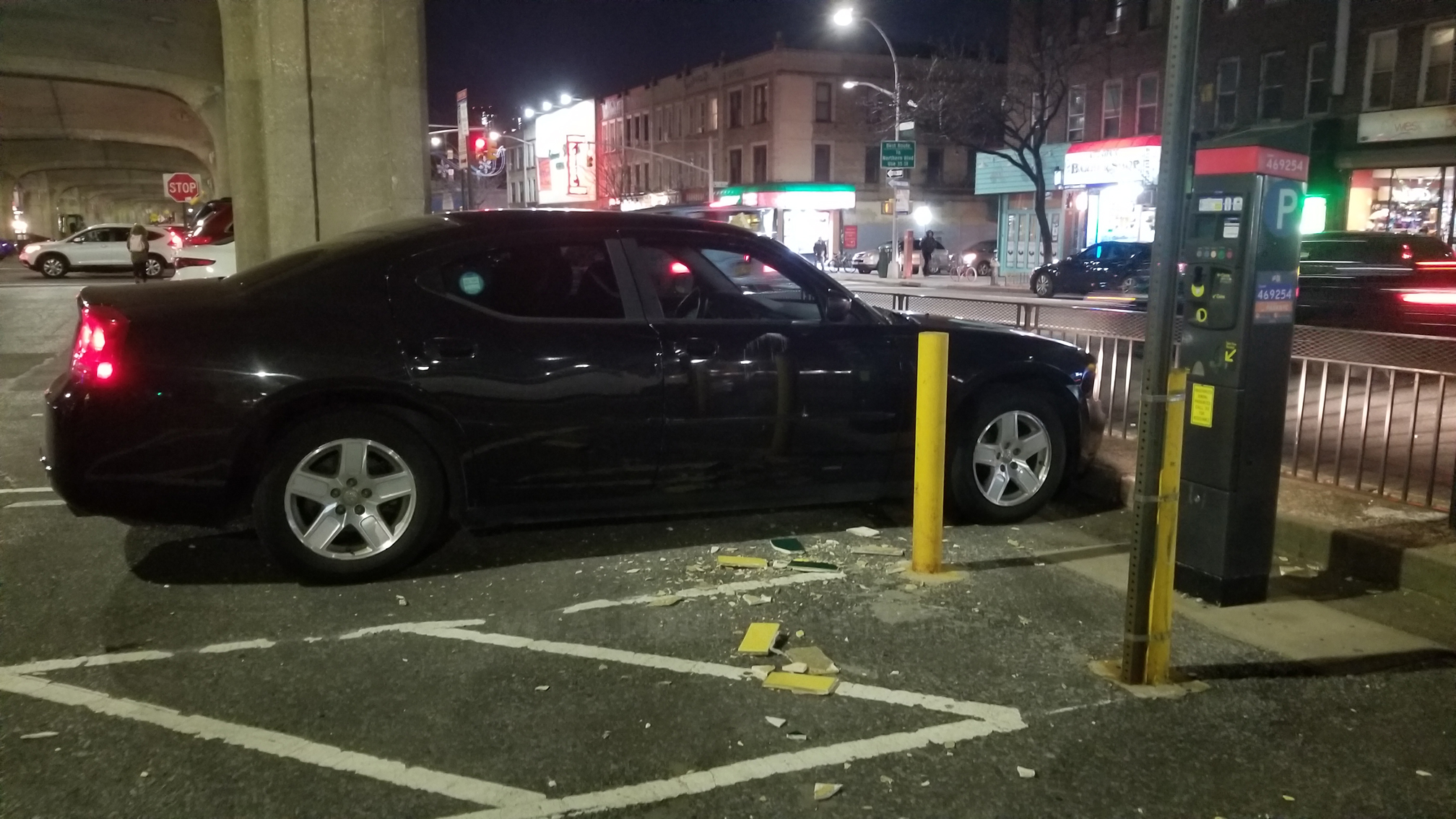
61st Street – Woodside station (Photo: Nathaly Pesantez)
Aug. 13, 2019 By Christian Murray
The subway stations in Queens are in a state of disrepair and a new report released by the state comptroller’s office indicates that nearly half the structural components—such as stairs, platforms and ventilators—are worn out or damaged.
The report, released by New York State Comptroller Thomas DiNapoli on Friday, noted that 44 percent of all structural components at Queens stations were either damaged or worn out. Stations in Queens had the largest share of worn or damaged structural components in 2017, followed by the Bronx at 34 percent, Brooklyn at 26 percent and Manhattan at 24 percent.
The findings were based on a 2017 survey conducted by the MTA’s New York City Transit division that reviewed nearly 15,500 subway station structural components at the city’s 471 stations in operation.
The report noted that 45 percent of the structural components at the Flushing Main Street station, the most heavily used station in Queens, were worn out or damaged. Across the entire system, the survey found that 29 percent of structural components were either worn out or damaged.
 “Years of underfunding for the MTA capital program has translated into a longer list of needed repairs in New York City’s subway stations, fewer stations in good condition, and ever-increasing rider aggravation,” DiNapoli said in a statement.
“Years of underfunding for the MTA capital program has translated into a longer list of needed repairs in New York City’s subway stations, fewer stations in good condition, and ever-increasing rider aggravation,” DiNapoli said in a statement.
The number of worn out and damaged parts has been getting worse in recent years. In 2012, 35 percent of Queens structural components were in disrepair as opposed to 44 percent in 2017. The number has also risen across the system—from 27 percent in 2012 to 29 percent in 2017.
DiNapoli’s report stated that condition of platform edges was of particular concern, with 65 percent of them worn out or damaged across the city, up from 43 percent in 2012. Furthermore, 11 percent of platform edges were found to have serious defects.
But the report was not all doom and gloom.
The number of structural components that had serious station defects has come down. The report notes that there was a 25 percent reduction between 2012 and 2017 in the number of structural components with serious deficiencies. Furthermore, the number of stations with serious structural deficiencies fell from 188 to 158 between 2012 and 2017.
DiNapoli notes that the cash-strapped MTA has focused on fixing those components in the worst condition, while leaving the overall system to gradually wear out.
“On the plus side, the MTA has been able to reduce the number of serious station defects, but a lot more needs to be done to address declining station conditions,” DiNapoli said.
The report also reviewed the nearly 22,000 architectural components at subway stations, such as tiles, finishings on platform floors, lighting, walls and ceilings. The survey found that only 7 percent of all architectural components were in need of repair in 2017, down from 13 percent in 2012.

Yellow and green tiles fell from the elevated subway line in Sunnyside in January damaging cars (Photo: Vitali Ogorodnikov)
Nearly all lighting was reported in good repair and the appearance of stairs and mezzanine floors had improved since 2012.
But the report noted that only 26 subway stations were free of both structural and architectural deficiencies, down from 51 in 2012.
The MTA defended the state of the system and claimed that the study focuses too much on minor issues that have no bearing on public safety. It said the report, however, does show that many serious defects have been addressed.
“As the comptroller notes in his report, NYC Transit has made significant strides at station repairs systemwide thanks to a station maintenance program that focuses on addressing individual components with serious defects,” said MTA spokesperson Tim Minton.
“The comptroller’s conclusion about the number of stations in fully repaired condition is flawed in that many more stations contain only minor issues, affecting neither safety nor the customer experience,” Minton said. “Those stations are understandably not prioritized for immediate repair. By focusing on high-priority defects separately, we are able to respond to serious issues quickly making the most of our limited resources efficiently and cost-effectively.”
6 Comments

You people voted for the mayor and governor you have. You made your bed, now sleep in it.
What do you mean, “You people?”
Carmine Anastasio, 100% correct.
Of course they are in desperate need of repair, think of the elements that these stations undergo too. Rain, snow, and ice just to name a few… things are bound to wear down or get damaged and at a faster rate outside than underground. With all the mta hikes you’d think they would work on these stations sooner but of course there’s never any funding. These repairs were long overdue and it’s no surprise that Queens has the worse stations.
What should I do to help
Bike to work!